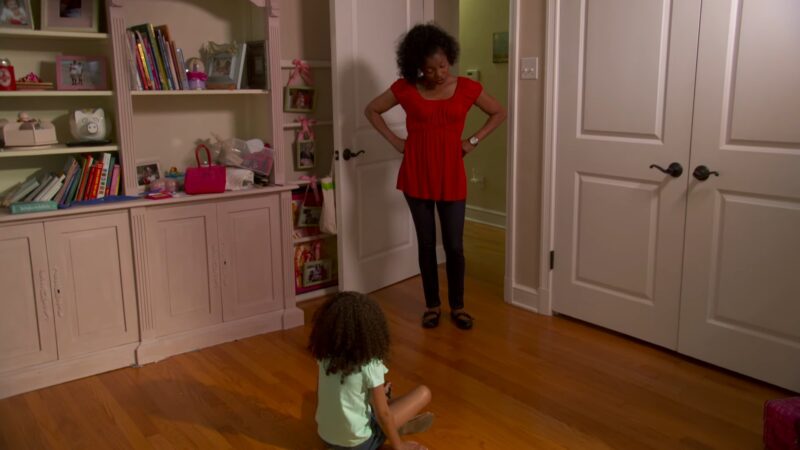We all know how difficult it can be to find the perfect way to raise your kids. Parenting techniques evolve with time and research, with the goal of nurturing well-rounded, emotionally stable children. Among these techniques, “Time-out” and “Time-in” have gained popularity, but they also raise questions about their effectiveness.
In this blog, we explore these methods, examining their pros and cons, and whether there’s a better way to approach child discipline and emotional development.
The Concept of Time-Out
The concept of “Time-out” has been a mainstay in parenting and educational disciplines for decades. Initially popularized by child psychologists in the 1960s, Time-out involves temporarily separating a child from an environment where inappropriate behavior has occurred.
The idea is to remove distractions and stimuli that may be contributing to the child’s misbehavior.
How It Works
The process of Time-out typically involves a designated area where the child remains for a set period, often one minute per year of age. This technique aims to provide the child with a quiet space to cool down, reflect on their behavior, and regain self-control.
The effectiveness of this method largely depends on its consistent and appropriate application.
Pros and Cons
| Pros | Cons |
|---|---|
| 1. Clear Boundaries: Time-out establishes clear behavioral boundaries. | 1. Emotional Disconnect: This can lead to feelings of isolation or abandonment. |
| 2. Immediate Response: It offers an immediate response to undesirable behavior. | 2. Misuse: Risk of overuse or using it as a form of punishment rather than a learning tool. |
| 3. Safe Space: Provides a non-threatening environment for the child to calm down. | 3. Lack of Engagement: Doesn’t teach coping or problem-solving skills. |
Exploring Time-In

Time-in, as opposed to the previous method, focuses on keeping the child within the environment and engaging them in understanding their emotions and behavior. This method involves a caregiver staying with the child, helping them to articulate their feelings, and guiding them toward more acceptable behaviors.
This method emphasizes emotional connection and communication. It involves sitting with the child, discussing what led to the current situation, and exploring feelings and better behavioral choices.
This approach is seen as more proactive in teaching emotional regulation and empathy.
| Advantages | Limitations |
|---|---|
| Emotional Support – Provides immediate emotional support and understanding. | Time-Consuming – More time-intensive and requires patience and emotional availability from the parent. |
| Learning Opportunity – Teaches emotional intelligence and problem-solving skills. | May Not Address All Behaviors – Not always effective for every type of misbehavior or in every situation. |
| Strengthening Bonds – This can strengthen the parent-child relationship. | Parental Consistency – Requires consistency and emotional regulation from the parent. |
A Comparative Analysis

Both techniques can be effective but are suited to different situations and age groups.
| Aspect | Time-Out | Time-In |
|---|---|---|
| Best For (Age Group) | Effective for younger children. | Suited to older children who understand emotions. |
| Impact on Child Development | Misuse can lead to abandonment feelings. | Fosters emotional intelligence but demands more. |
| Parental Involvement and Skill | Requires consistency and appropriateness. | Demands high emotional involvement and patience. |
Alternative Strategies in Child Discipline
In the quest to find a balanced approach to child discipline, blending elements of both Time-out and Time-In can be effective. This involves understanding the unique needs and temperament of each child and adjusting the approach accordingly.
For instance, starting with a Time-In to address emotional needs, followed by a brief Time-out to allow the child to reflect independently, can be a harmonious blend.
Other Effective Techniques
- Positive Reinforcement: Encouraging desired behaviors by recognizing and rewarding them.
- Setting Clear Expectations: Clearly communicating rules and consequences.
- Modeling Behavior: Demonstrating the behavior you wish to see in your child.
Tailoring to Individual Needs
Understanding that each child is unique is crucial. Some children may respond better to direct communication and emotional support, while others need a quiet space to cool down.
Flexibility and adaptation to the individual child’s needs are key components of effective discipline.
The Role of Parental Emotion Regulation

Parental emotion regulation plays a pivotal role in both methods. Children learn emotional responses and regulation from their parents. If a parent is calm, composed, and empathetic, these traits are more likely to be mirrored by the child.
Strategies for Parents
Regularly reflect on your own responses and behaviors. Engage in practices that reduce stress, like meditation or exercise. Utilize resources like parenting classes or counseling when needed.
Impact on the Effectiveness of Discipline Strategies
A parent’s ability to regulate their own emotions directly impacts the effectiveness of any discipline strategy. A calm and understanding approach is more likely to foster a positive and constructive learning environment for the child.
Integrating Time-Out and Time-In into a Comprehensive Parenting Approach

Integrating both methods into a parenting strategy involves understanding when and how to use each method effectively. It’s about creating a balance that allows for emotional growth, learning, and reflection.
A balanced approach can lead to long-term benefits for children, including improved emotional regulation, better social skills, and a stronger parent-child relationship. It also sets a foundation for them to develop into emotionally intelligent and well-adjusted adults.
Parenting is a journey of continuous learning and adaptation. Staying informed about the latest research in child development and being open to adjusting your methods can greatly enhance the effectiveness of your parenting approach.
FAQs
How do I know if I’m overusing Time-out as a discipline method?
Signs of overusing Time-out include it becoming less effective over time, your child showing increased anxiety or distress when the method is mentioned, or relying on it for every minor misbehavior.
If this technique is your go-to response regardless of the situation or behavior, it might be time to reassess its use and consider other strategies.
Can Time-In be effective for very young children who aren’t yet verbal?
Yes, this method can be adapted for younger children. It involves more than just talking; it’s about providing a calm, comforting presence. For non-verbal children, this might mean holding them gently, offering soothing touches, or simply being present in a calm and reassuring manner.
Is there a risk that a child might view Time-In as a reward rather than a discipline method?
This technique is not designed as a punishment, but rather as a learning opportunity. It’s about guiding the child to understand their emotions and behaviors. If it is structured correctly, it shouldn’t be seen as a reward but as a supportive process to help the child develop better-coping mechanisms.
How can I effectively transition from using Time-out to Time-In with an older child who is used to the first method?
Transitioning can start with a conversation explaining the new approach. Introduce Time-In gradually, using it alongside Time-out initially. Encourage open communication and let the child express how they feel about this change.
Be patient and consistent in implementing the new method, reinforcing its purpose as a learning and emotional growth tool.
What should I do if my child refuses to stay in Time-out?
It’s important to remain calm and consistent. Gently but firmly guide them back to the Time-out spot. If resistance continues, consider if the method is being used appropriately or if another method might be more effective.
It’s also important to evaluate the underlying reasons for their refusal to cooperate.
How can I measure the success of using Time-In as a discipline method?
Success with this method can be gauged by observing changes in your child’s behavior over time. Look for improved emotional regulation, better articulation of feelings, a decrease in negative behaviors, and a stronger, more positive relationship with your child.
Remember, the goal is not immediate compliance but long-term emotional growth and understanding.
Summary
In conclusion, while there is no one-size-fits-all solution in child discipline, a blend of Time-out and Time-In, complemented by other effective techniques and a strong focus on parental emotion regulation, can create a balanced and nurturing environment for children to grow and thrive.
As parents, our goal should always be to guide our children towards becoming emotionally healthy and resilient individuals, equipped to face the challenges of the world.
